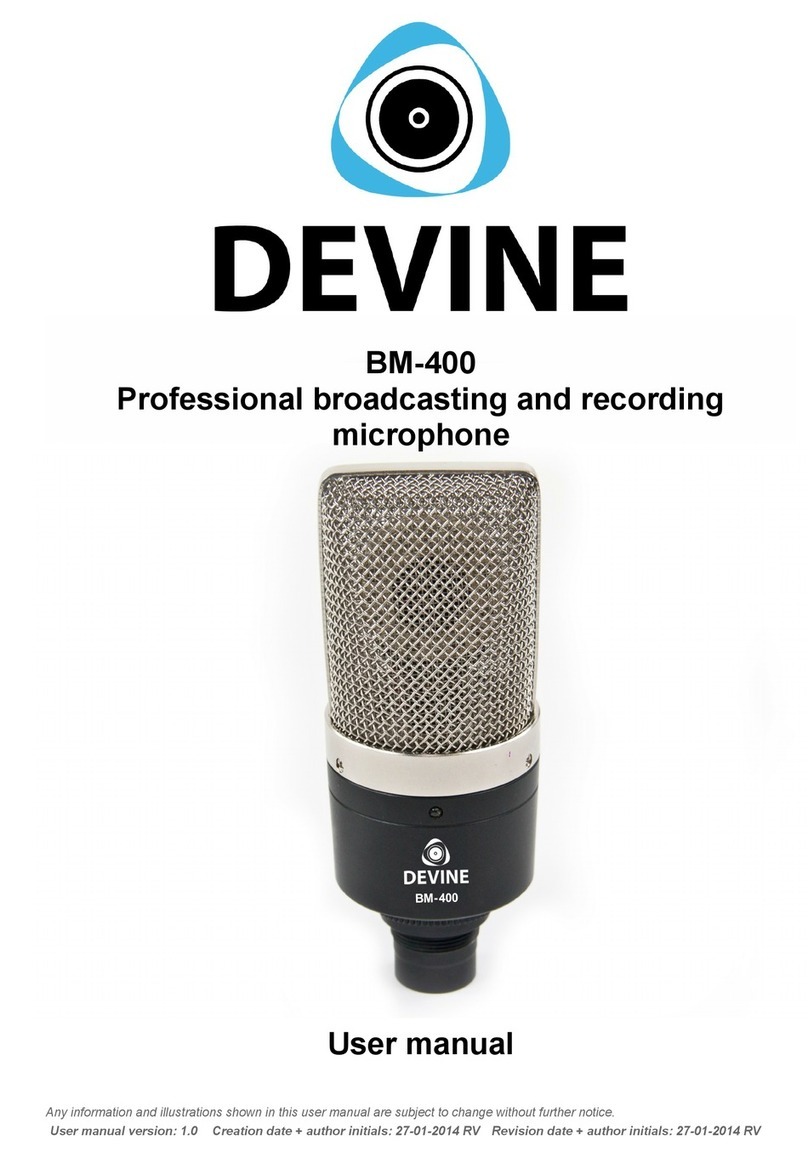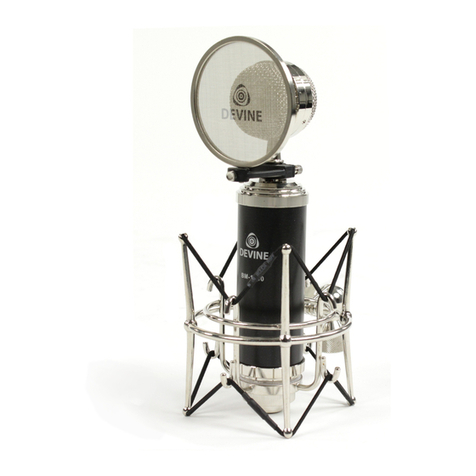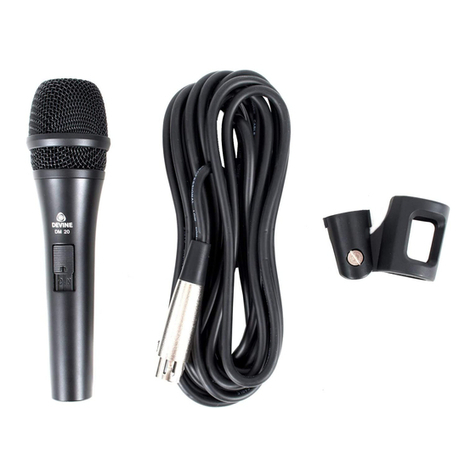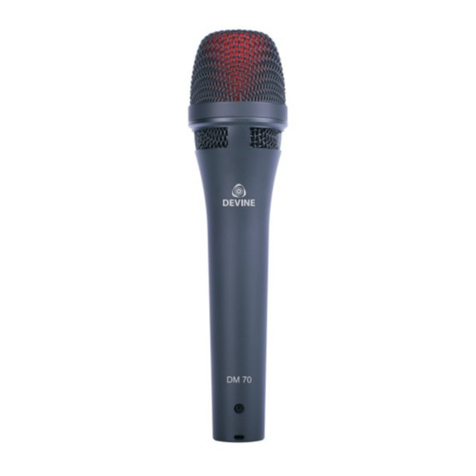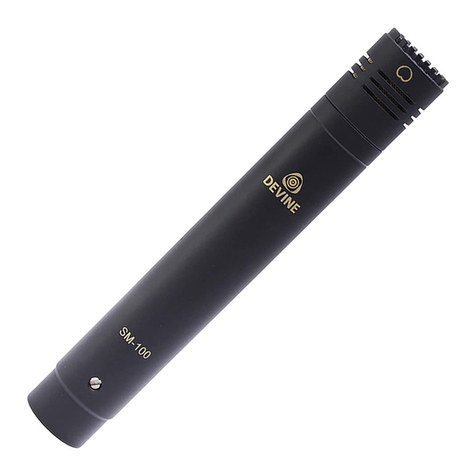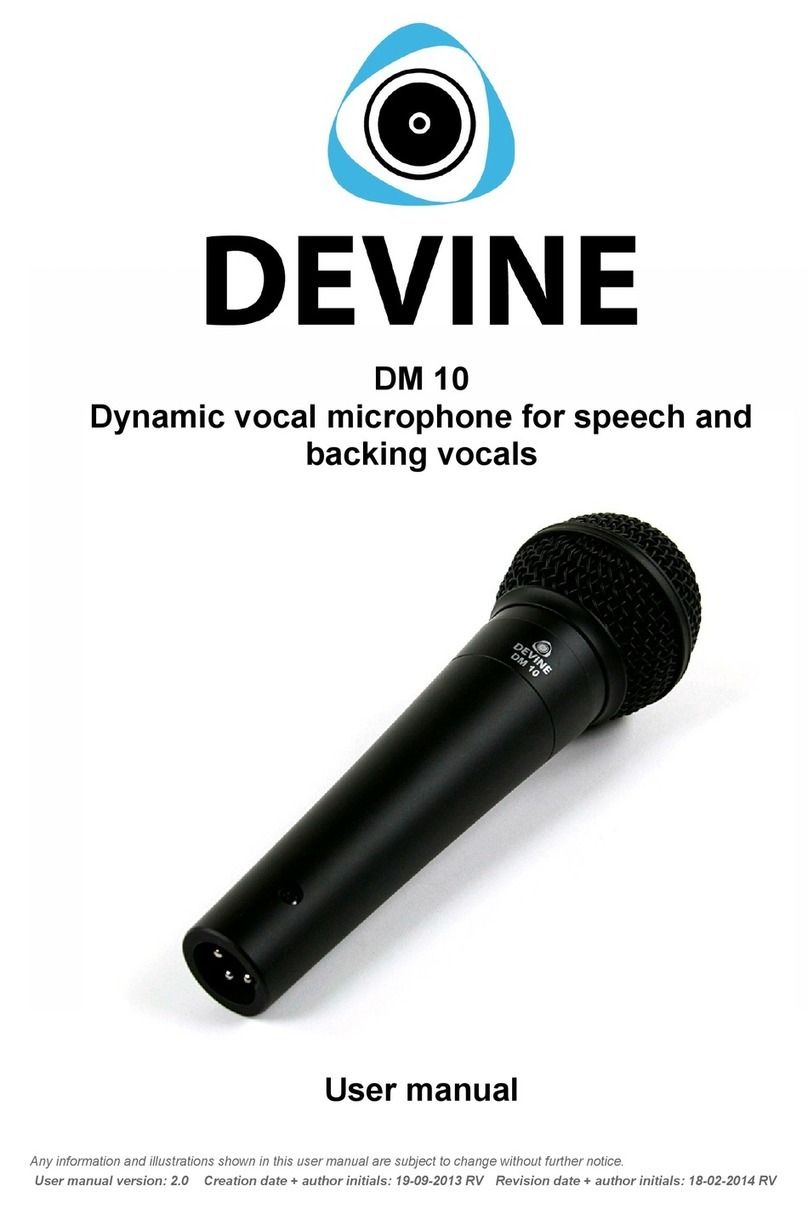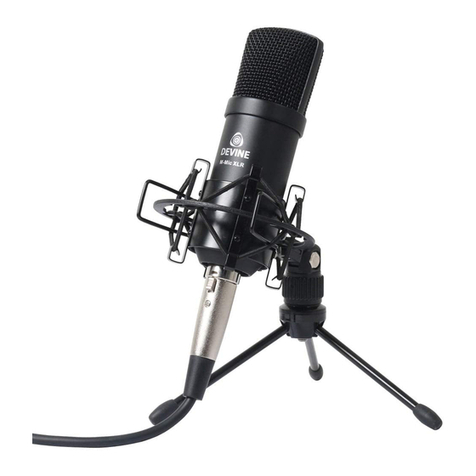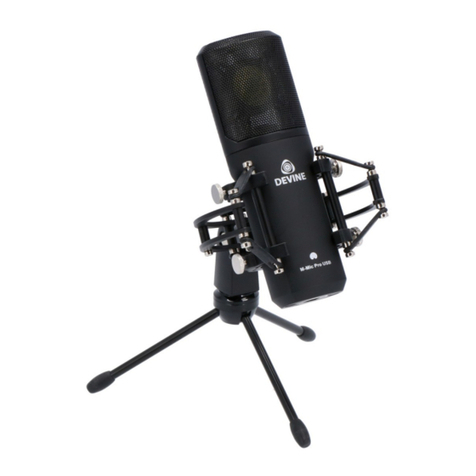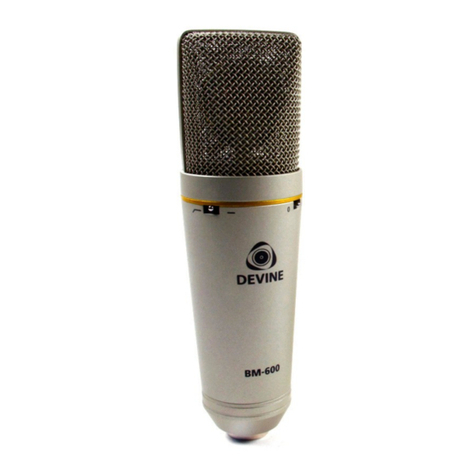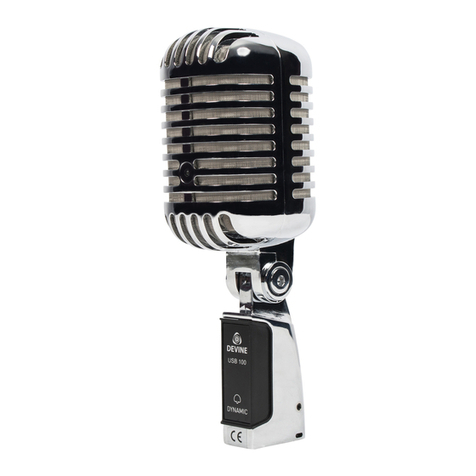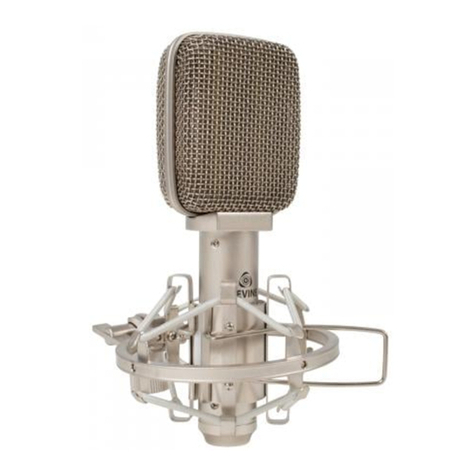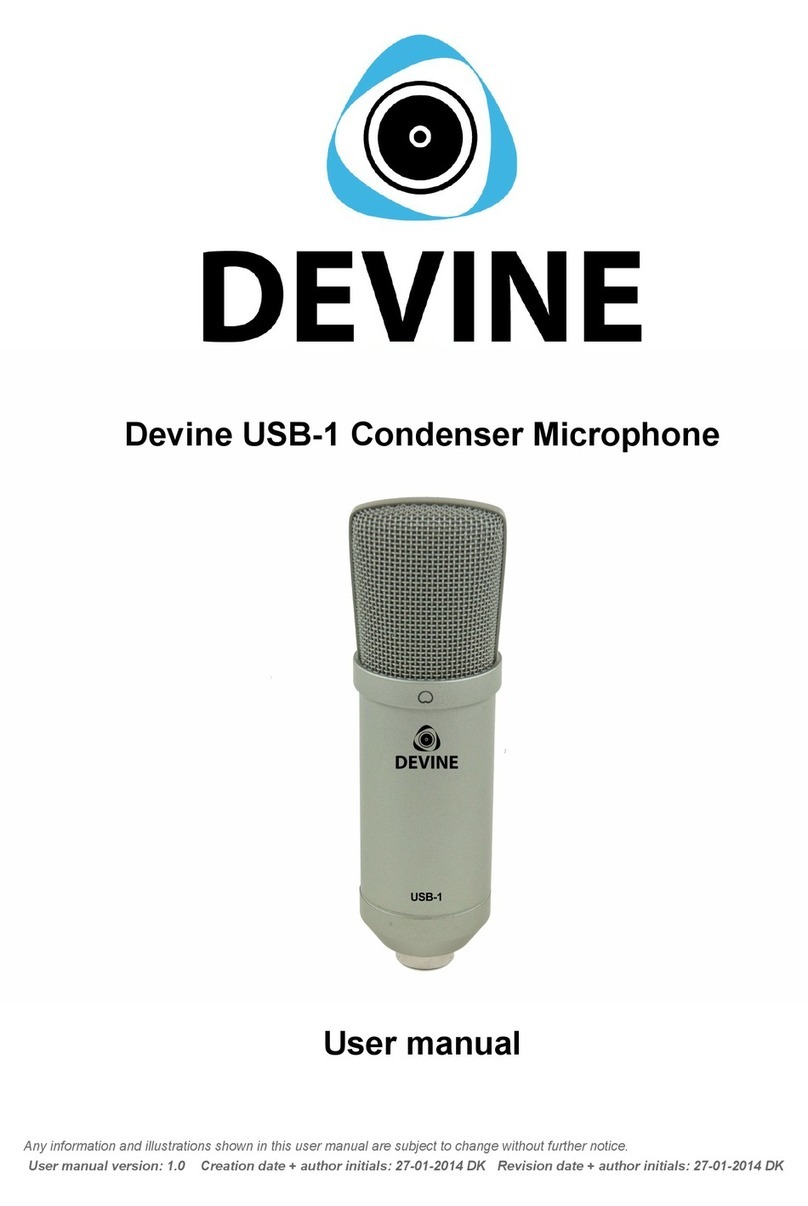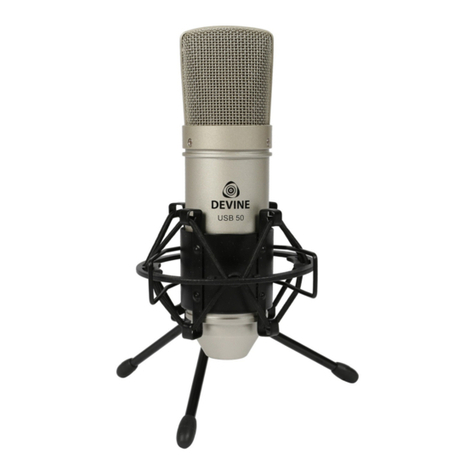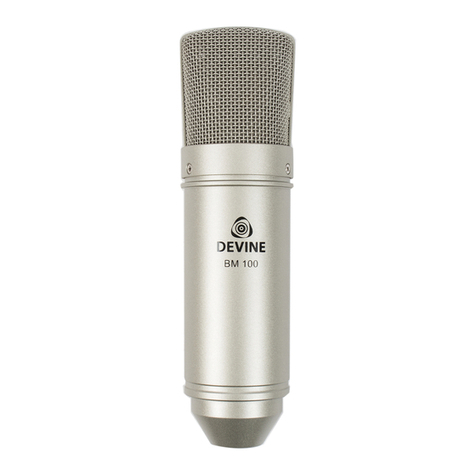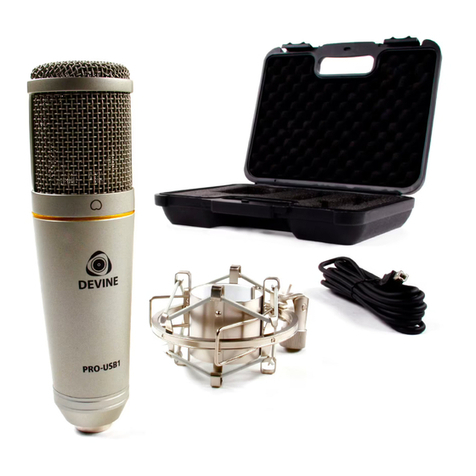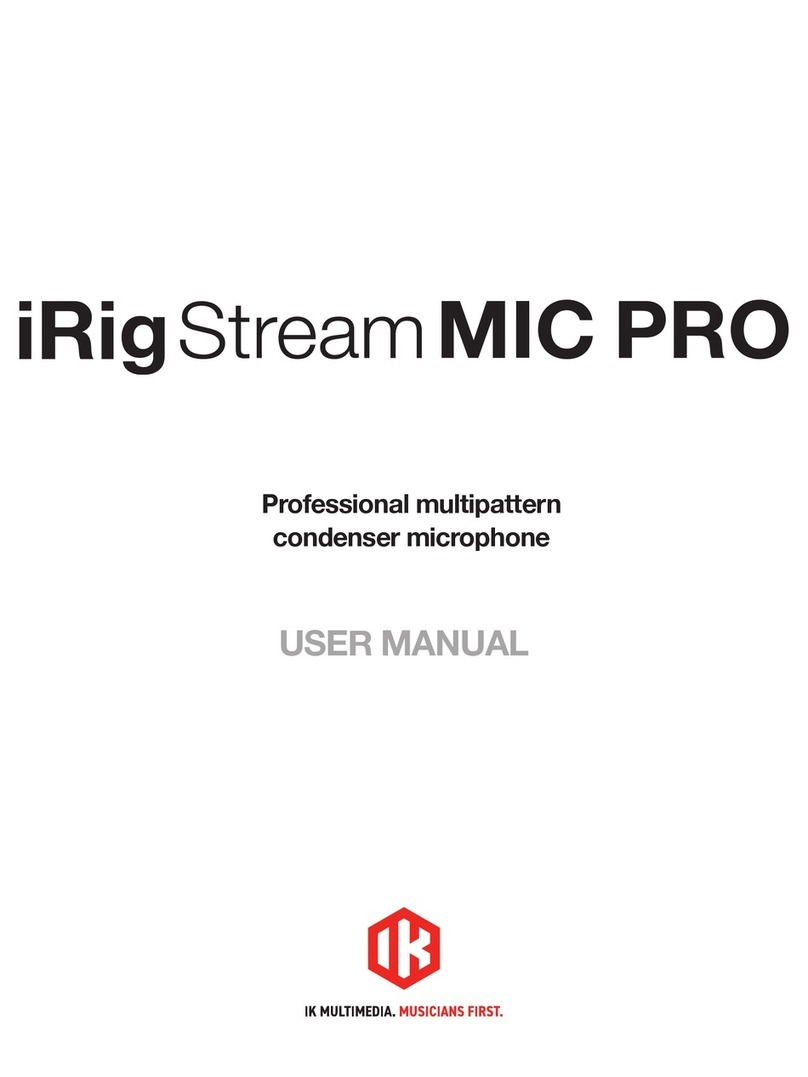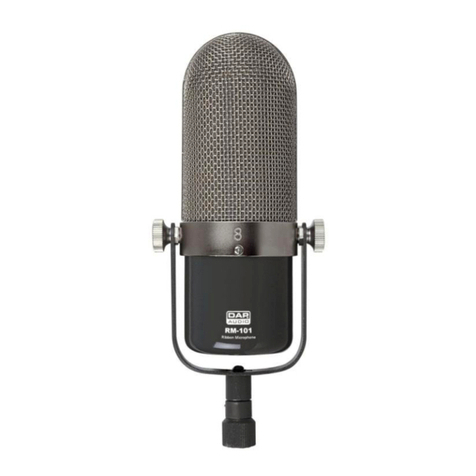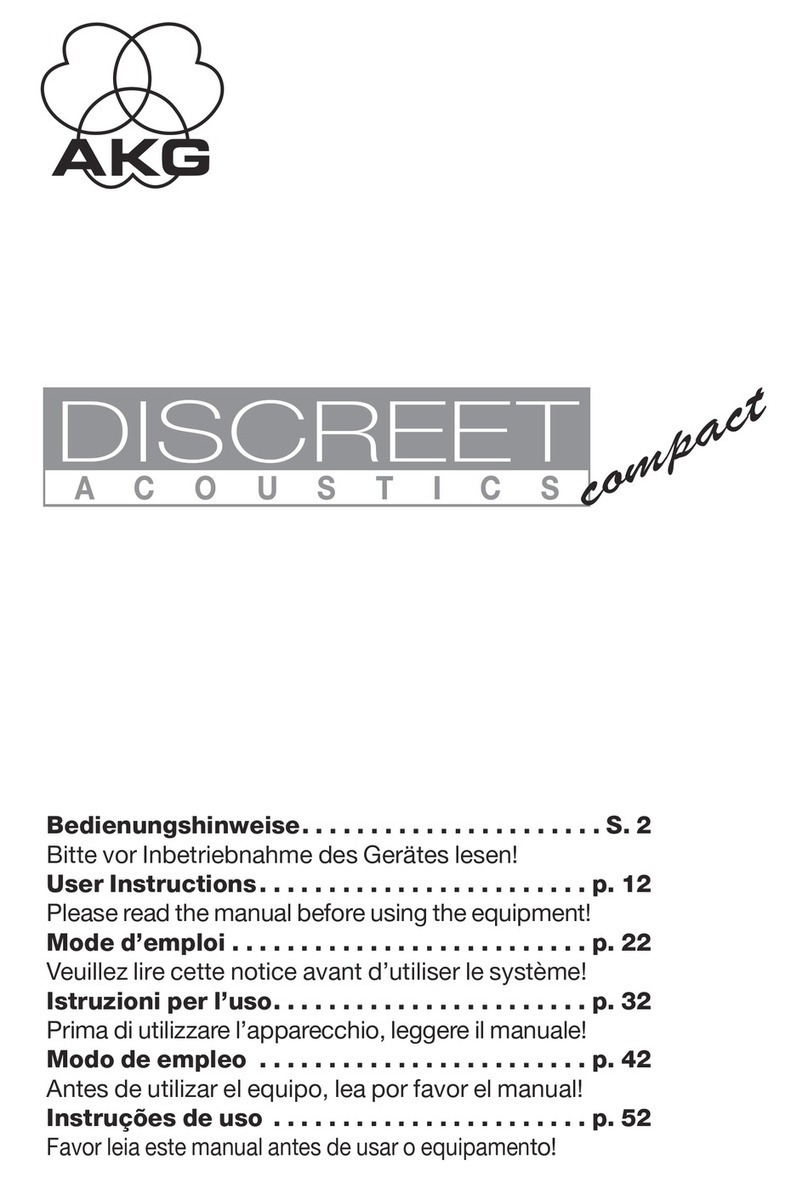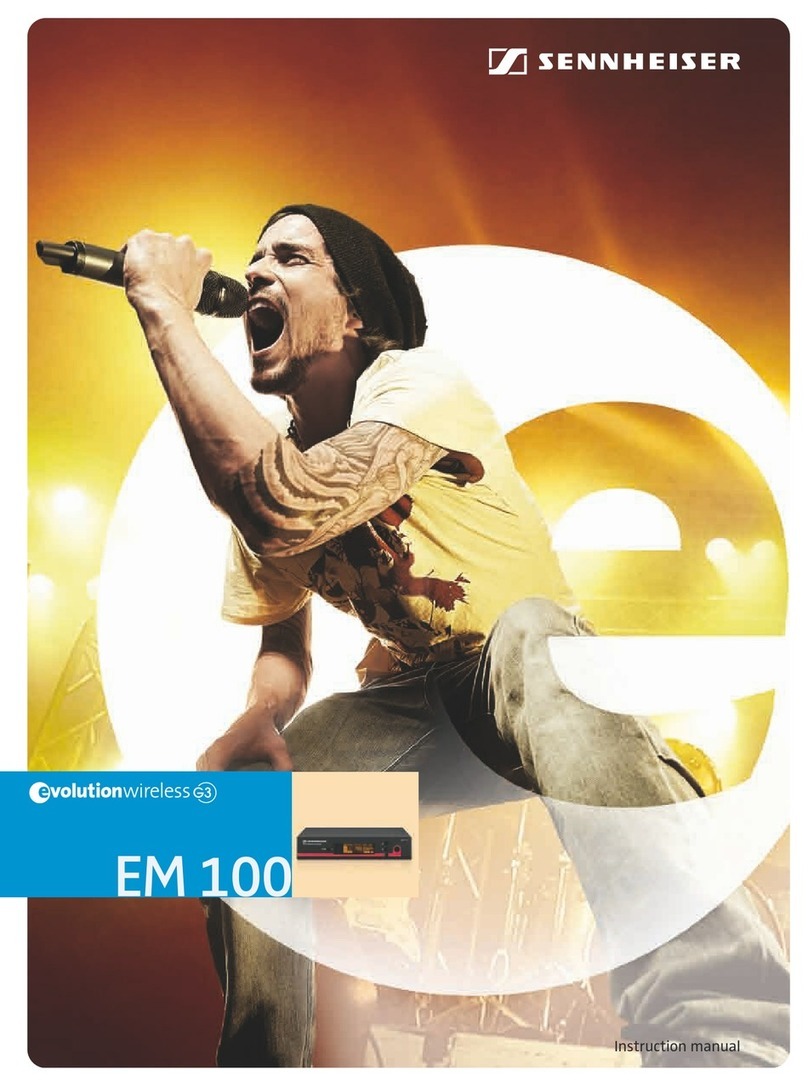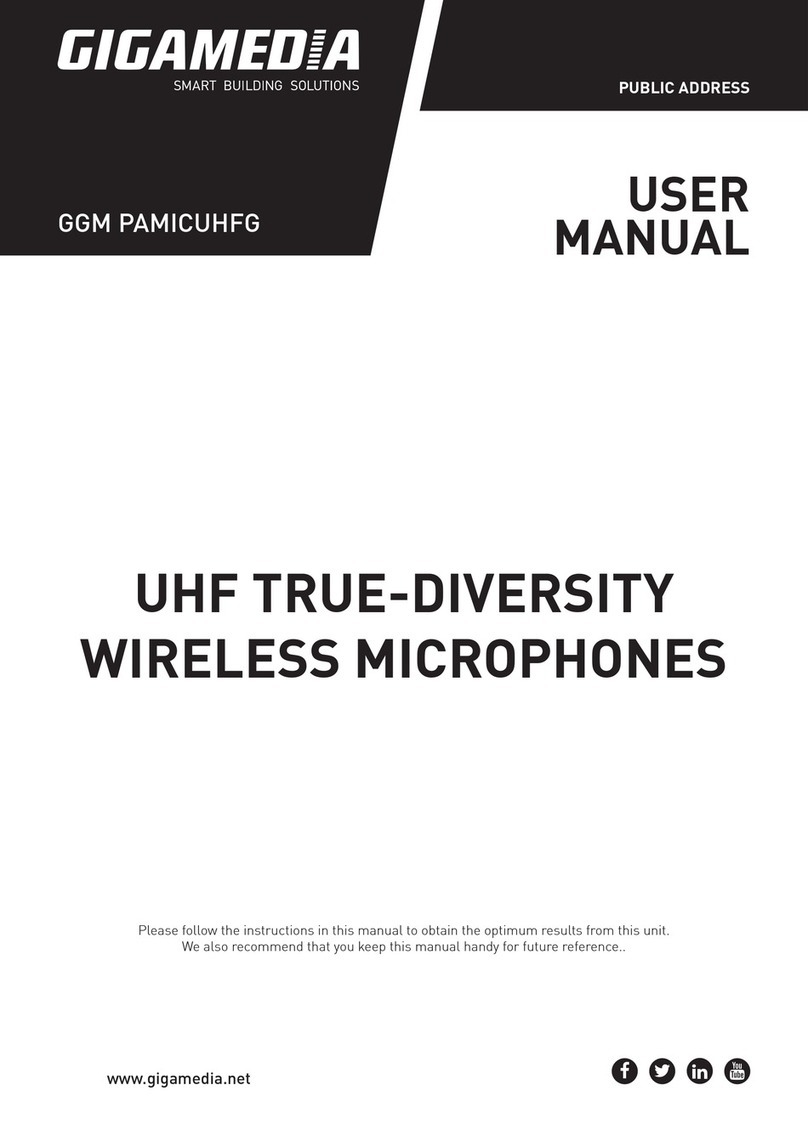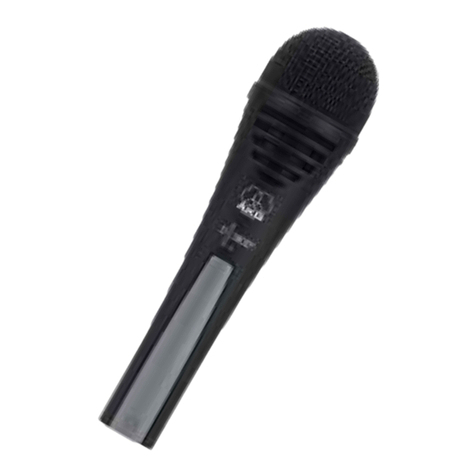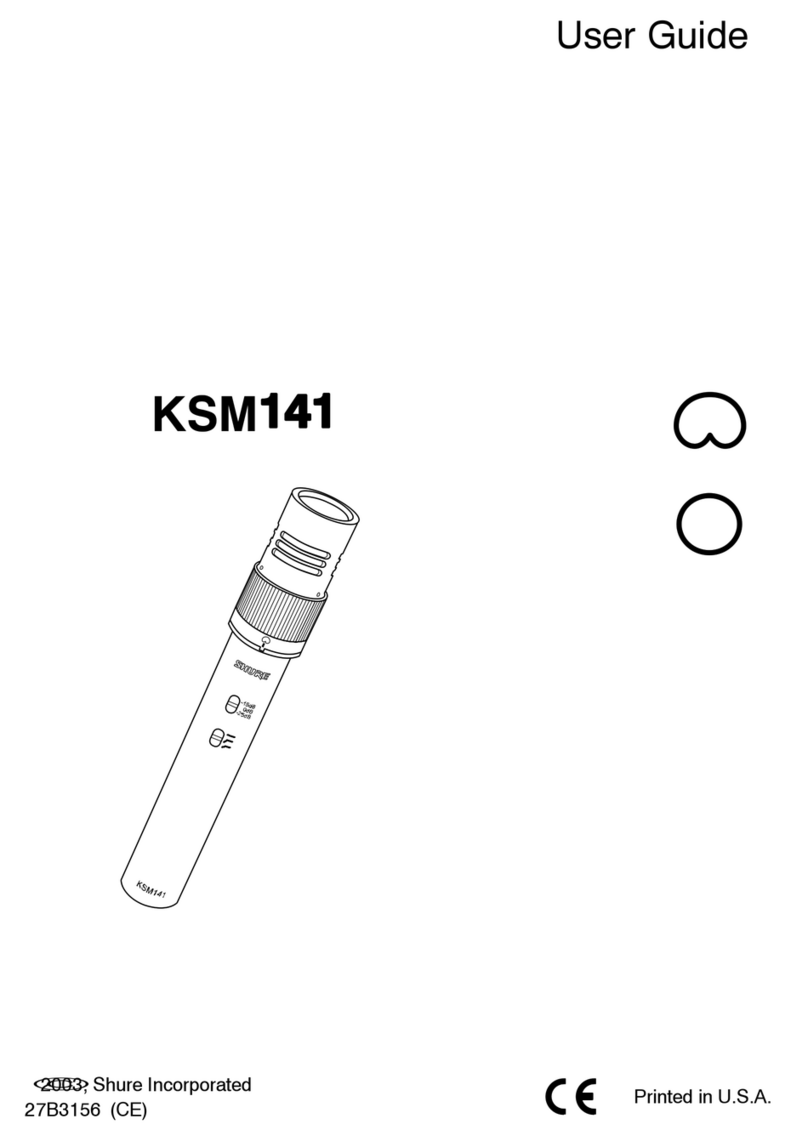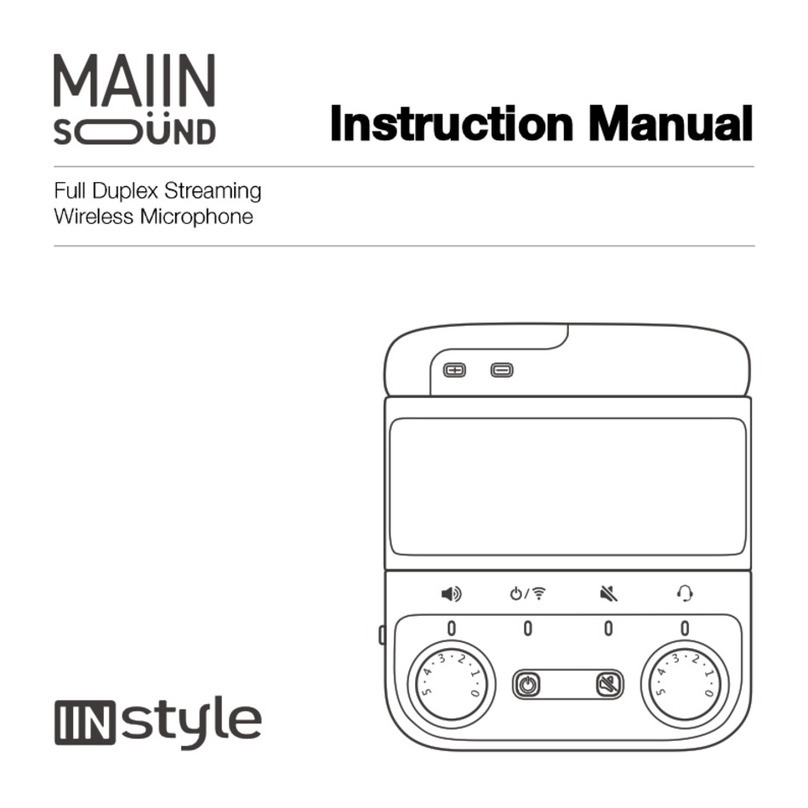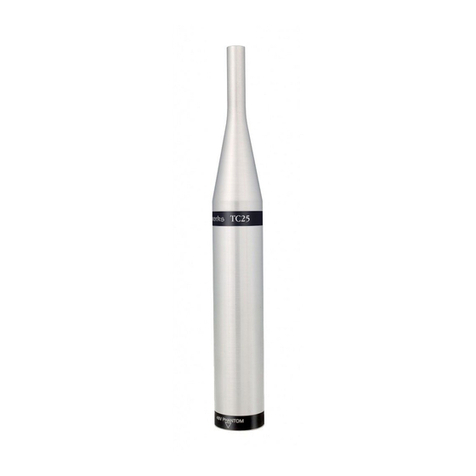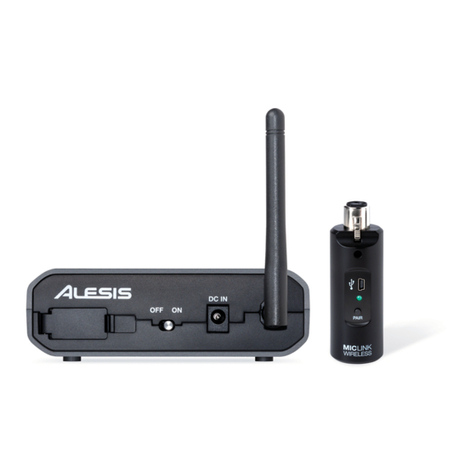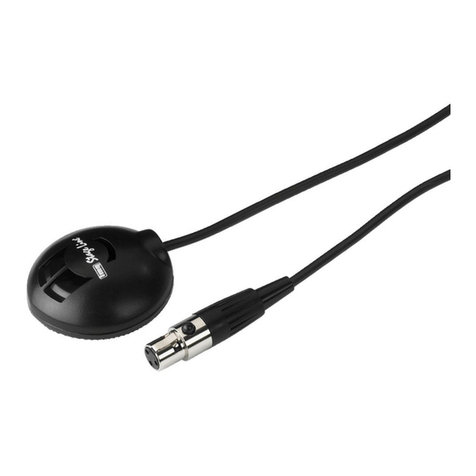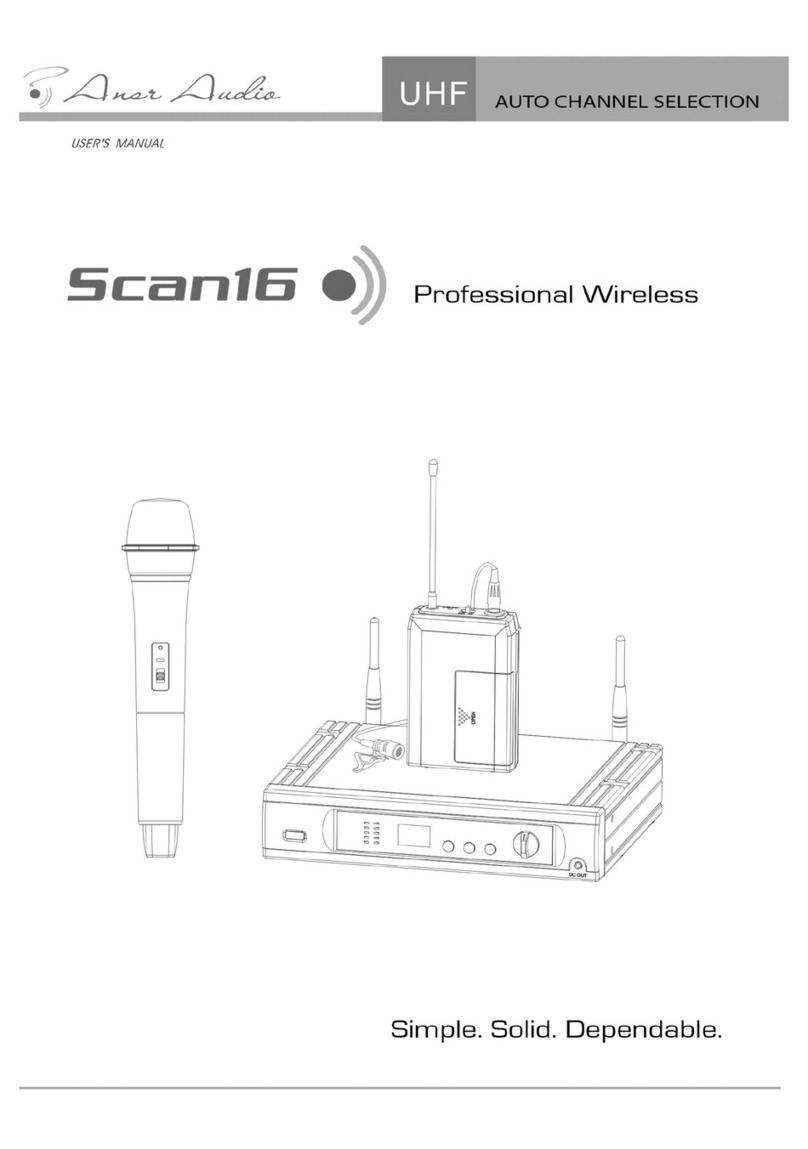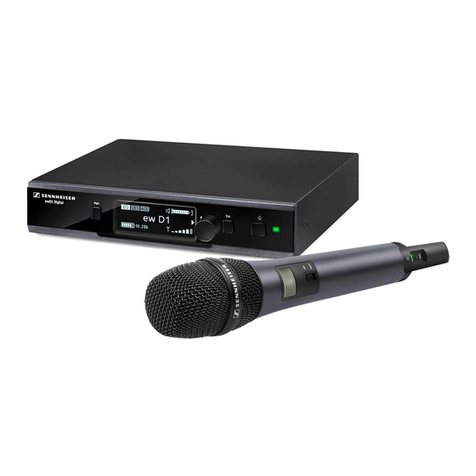Optional:
If mounted in the included shock mount, the M-Mic microphone can also e mounted on a
professional mic stand or roadcasting arm as long as they are equipped with a 3/8-inch or
5/8-inch (industry standard) screw thread. If necessary, you can use the thread adapter that
can e found on the tripod.
If you use a different stand than the included tripod, it is highly recommended to position the
audio source as close to the mic as possi le for optimal results. As always, make sure the
rand and type num er are facing towards the audio source. If your setup requires it, the
microphone can also e used upside-down.
Optimal sound quality
To maintain optimal audio quality, it is necessary to position the microphone as close to the
audio source as possi le, unless it produces extremely high volume levels (such as a drum
kit).
For vocals or instruments, position the mic as close as possi le to the audio source. When
using the included tripod, make sure it is placed on a desk or other flat, sta le surface.
Position the microphone at an angle (while ensuring the rand and type num er are still
visi le and facing the audio source), to capture the est possi le audio.
The further away an audio source is from the microphone, the less volume it produces. This
will need to e compensated either during recording or afterwards in the studio.
Every audio device (regardless of rand) generates some sound or self-noise. When used
normally and as recommended, this noise is arely audi le, ut the more you need to
amplify an audio fragment, the more audi le this noise can ecome.
If an audio source is very quiet or positioned too far away, the self-noise level of the
microphone itself can ecome too high when the captured audio is amplified.
If you are having pro lems with noise or unwanted sounds, always try to adjust the position
of the microphone first. A separately-availa le microphone stand or roadcasting arm may
e necessary for optimal results.
In situations where an optimal setup is not possi le, for example if you want to record vocals
and an instrument at the same time, it is recommended to place the microphone as
optimally as possi le etween the two audio sources. Experiment y making short test
recordings in various setups and compare them to finds the est possi le solution.
Software, compatibility and support
A Devine M-Mic microphone is ‘class compliant’, which means that it is a generic device that
can e installed without extra drivers or software on just a out any intelligent device
(otherwise known as host) such as a computer, laptop, ta let or smartphone. The host will
recognise it as a generic USB microphone.
The information in this user manual is subject to change at any time without notice.
Version:
1.0
Date of creation and author's initials:
05-0 -201 RV
Revision date and author's initials: -
